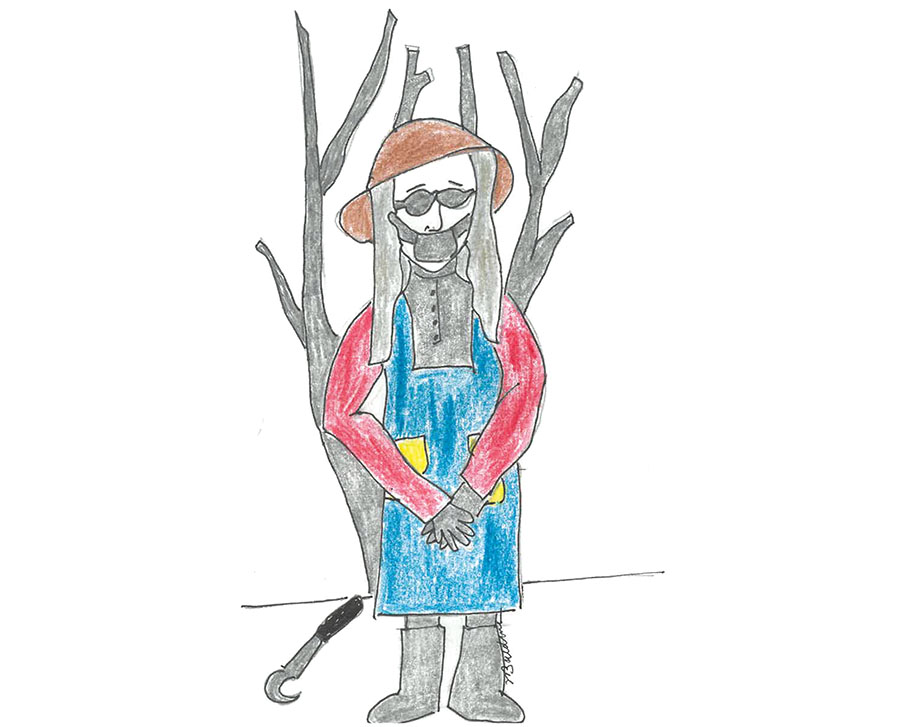
We still do not know one thousandth of one percent of what nature has revealed to us. – Albert Einstein, German born theoretical physicist (1879-1955)
They passed a special display-marked by warning signs-of poisonous plants…white angel’s trumpets and the small, deceptively innocent-looking berries of deadly nightshade. – Susan Wiggs, American novelist (1958-)
Nightshade in the Merriam-Webster dictionary describes any of a genus “Solanum” of the family Solanaceae, the nightshade family of herbs, shrubs, and trees having alternate leaves, cymose flowers and fruits that are berries and including some poisonous weeds, various ornamentals and important crop plants such as potatoes, eggplants, and tomatoes.
For some people just handling these fruits or vegetables can cause uncomfortable or even life-threatening reactions. Others find no problems at all. Most people have heard poison ivy, poison oak, poison sumac and Virginia Creeper are to be avoided.
I was told no one is allergic to Virginia Creeper so in the height of heat one summer I pulled down all the Virginia Creeper. The next day I was in the dermatologist’s office with face and arms blown up like balloons. The doctor said no more fooling around with vines. Then came shots, medicines and potions. I googled “reactions to Virginia Creeper” and it turned out 2% of the population is allergic to Virginia Creeper. It also said, “Although Virginia Creeper leaves do not contain urushiol, like poison ivy, the sap can irritate highly sensitive people.” From that experience I learned I was a highly sensitive person.
Other poisonous plants found in Mississippi: Castor Bean, Water Hemlock, Poison Hemlock, Milkweed, Butterfly Weed, Prairie Larkspur, Trumpet Creeper, Wild Red Columbine, Hydrangea, Zigzag Iris, Honeysuckle; listed at progardentips.com.
Some of the above listed plants are only toxic if ingested. A few are only toxic to pets. Some caused skin rashes and others caused digestive issues in humans. Many of the poisonous plants in the list grow here in the Prairie. The nightshade list grows in my garden and greenhouse. While this information could be a bit alarming just be aware as we enter into the growing season. Even though I’m a “highly sensitive person,” I eat tomatoes with no effects whatsoever. Will I handle the tomato, eggplant, potato stems or vines? Not without gloves.
Our loropetalum bush was out of control, next to the garden it topped ten feet tall. With loppers and pruners, I cut it back to a manageable height. The next morning my forearms, neck and left side of my face was broken out in a red, itchy, stinging, swollen rash. There was a slight puff to the left eye. Out came Calamine lotion, antihistamine, and hand sanitizer.
Not in my wildest imagination did I think loropetalum could be toxic. It was difficult to find any information on the internet. I mentioned it to two of my gardening friends who said, “Oh yes loropetalum and azaleas are toxic.” It meant a trip to the dermatologist and a commitment to wearing protective clothing, long gloves, protective lotions, and washing after any and all contact. Take care; be aware.
Shannon Bardwell is a writer living quietly in the Prairie. Email reaches her at [email protected].
You can help your community
Quality, in-depth journalism is essential to a healthy community. The Dispatch brings you the most complete reporting and insightful commentary in the Golden Triangle, but we need your help to continue our efforts. In the past week, our reporters have posted 32 articles to cdispatch.com. Please consider subscribing to our website for only $2.30 per week to help support local journalism and our community.



